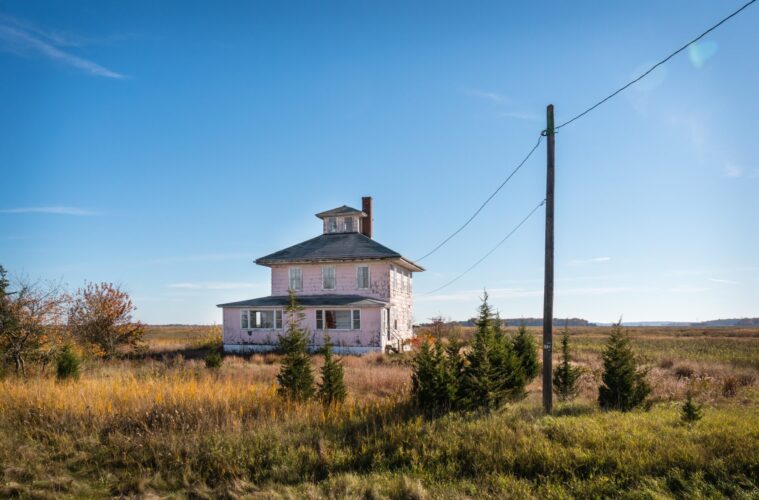It was standing room only at PITA hall on the Monday before Thanksgiving, as more than a hundred concerned citizens and public officials packed in to discuss the fate of the Pink House. The meeting, moderated by State Senator Bruce Tarr, was held in response to a public comment period opened by the U.S. Fish and Wildlife Service (FWS), which owns the building, to plan for the fate of the iconic structure.
“It is beyond dispute that there is widespread support for saving the Pink House,” Tarr said in opening what was a respectful conversation about the possibilities and realities of conserving the hundred-year-old structure located on Plum Island Turnpike.
Refuge manager Matt Hillman agreed, mentioning that he understands the importance of the striking structure himself, and appreciates the strong community support for the house and the refuge more generally. “It’s actually the privilege of my career to be managing this National Wildlife Refuge,” he said, noting that he visited the refuge as a child and has family who lived on Plum Island. “There are a lot of people who care deeply about the refuge and my staff and I are no different.”
However, Hillman explained, both public and private organizations have invested countless hours and thousands of dollars in seeking a way to transfer the building to an organization that can care for it, and eight years later, all efforts have come up short. “Eight years without any fruitful results [is] a lot of time to be doing this,” he told the group. “It [is] time to try a different strategy.”
That strategy involves asking the public for ideas and solutions in a last-ditch effort to save the structure. “Is there someone out there who might have a solution that, despite eight years of effort, we haven’t thought about it and we haven’t pursued?” Hillman asked, noting that the publicity around the public comment group has already led to a few possibilities.
The audience, which included town officials from Newbury, Salisbury, and Newburyport, added some more ideas, with Salisbury offering to research marshlands that might be appropriate for an exchange. “I don’t want to get people’s hopes up. But I think it is important to know that there are potential options that are still hopefully viable, that we will work through over the coming weeks.”
Hillman stressed that the demolition proposal was not a done deal, and agreed with many audience attendees who commented that the best solution for FWS is preservation, but he explained that it is not that easy, because it is illegal for National Wildlife lands to be sold. Instead, the organization must swap the parcel for something of equal or greater ecological value, within a mile of a current FWS preserve— and roughly the same monetary value. Current appraisals value the property at $425,000.
The Support the Pink House organization was well-represented at the meeting, and board president Rochelle Joseph, noted that their restoration partner is ready with the money to make the land exchange happen, should an appropriate parcel be identified. She said over the past eight years of working with the refuge for a solution, more than 35 professionals had donated time toward efforts to save the building—to the tune of some $150,000 if it had been billable hours. “We just want everyone to know the salvageable,” Joseph said, noting, “There are no cracks in the foundation, the walls and windows are straight.”
Over the course of the 90-minute meeting, much support was voiced, and elected officials talked through other possible avenues.
“Although it’s not listed on the National Register of Historic Places, the Pink House is clearly an icon to this community,” Hillman said. “It means a lot in the hearts and minds of everyone from artists, to bird watchers, to passers-by who are visiting Plum Island for their first time. We value that and … that is why we’ve been working at this very, very hard –thousands of hours. This could be a win-win. And it’s not over yet.”

